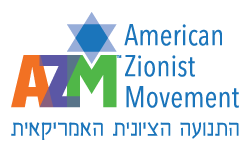With Israel, In Israel
A Photo Essay

By: Deborah Fishman
Day Three — August 9, 2006
Eli Moyal has a difficult job to do. As Mayor of Sderot for the last six years, he has had to sustain the morale, economy, and social fabric of a town bombarded daily by qassam rockets lobbed over from the dangerously close Gaza Strip. However, Moyal told us that, despite the threat of the rockets, the population of Sderot has actually grown from 20,000 citizens in 2001 to 24,000 in 2006. “Leaving is not the right answer,” he said. “This is our place.” He added that the Sderot schools were open and in fact had not closed for even one day. Moyal voiced his opinion that the residents of the North should not have left their homes, either. Yet he personally is housing a family from the North who preferred the qassams of Sderot over the katyushas of Haifa.

Moyal expressed a great frustration and sadness regarding the current situation. He especially was pessimistic about the outcome of last year’s disengagement, which has allowed the Palestinians to use Gaza as a rocket launching ground. He emphasized Israel’s unfortunate position, condemned by world opinion. Though he thanked the United States for their aid, he proclaimed, “In the end of the day, we are alone.” At the same time, he maintains confidence in his people and his government. “We are strong. We are the same Israelis who beat all the Arab nations,” he reminded us.

One major problem faced by the citizens of Sderot is post-trauma disorder, the “invisible disease” that affects more than 80% of Sderot’s children. “Our disaster is our kids,” Moyal said. They are afraid to go out at night, they sleep with their parents and wet the bed, and many have resorted to drugs and alcohol. There are plans in the works for a new, state-of-the-art facility to treat children afflicted with the syndrome. May the children of Sderot and all the town’s inhabitants find comfort, peace and security soon.

As a last-minute surprise, we had the opportunity to visit Nitzanim, known in English as “Tent City.” 6,000 people are living on the beach, having left behind their homes in the war-torn North. Thanks to a single Russian benefactor, there is food, sleeping arrangements, portable toilets, and activities for adults and children. Nevertheless, the inhabitants of Tent City are slowly going crazy out of fear and frustration. Tent City begs the question: how long can this last?
Our last stop of the trip was the Barzilai Medical Center in Ashkelon, which serves a half a million people, including soldiers fighting in nearby Gaza Strip as well as many Russian immigrants. We spoke with head cardiologist Amos Katz, who told us that there is a higher rate of heart disease here than in the center of Israel, pointing to a correlation between qassam attacks and heart attacks. Nevertheless, the budget of this hospital “on the periphery” is drastically tighter than those of hospitals in the center of Israel. Parts of the gynecology unit are forty years old and never renovated. We visited with a woman who had been hit by a bomb while working in an Elite factory and saw some babies that had been born that very day. The most remarkable thing we learned was the degree to which Israeli doctors have the desire to cooperate and share medical information with their Arab counterparts.
Day 1 | Day 2 | Day 3 | Conclusion
